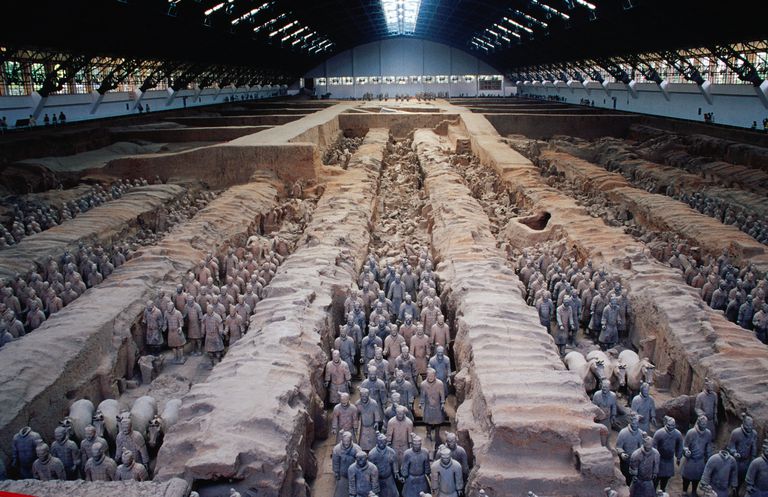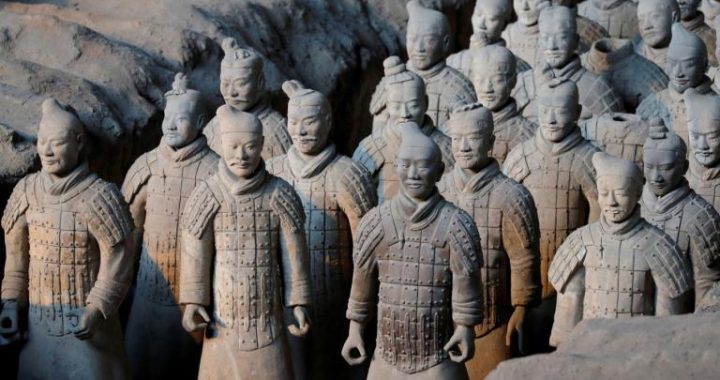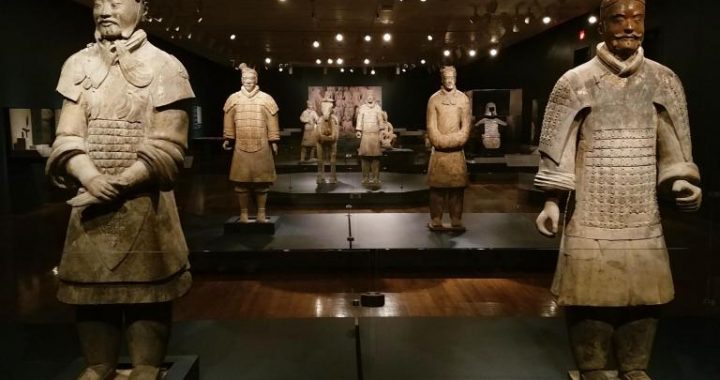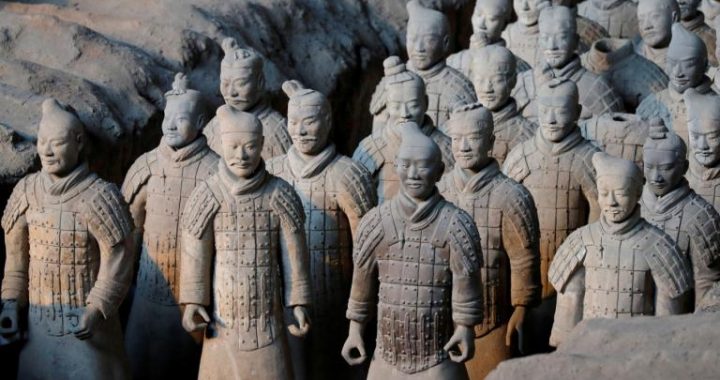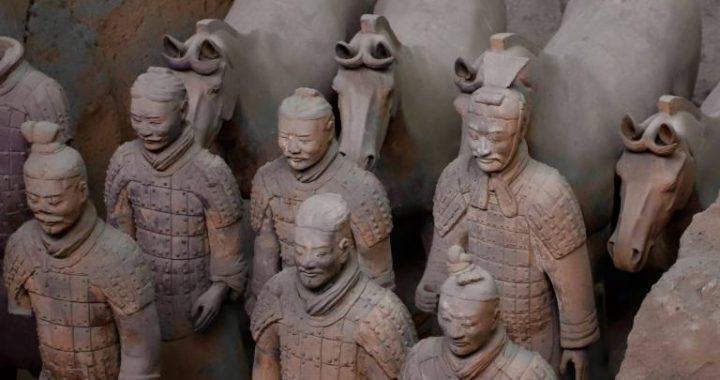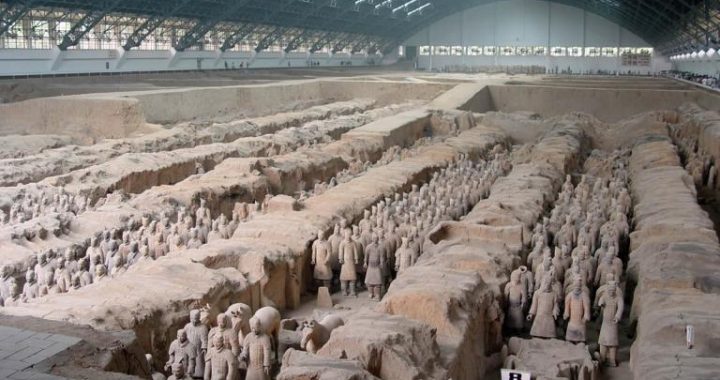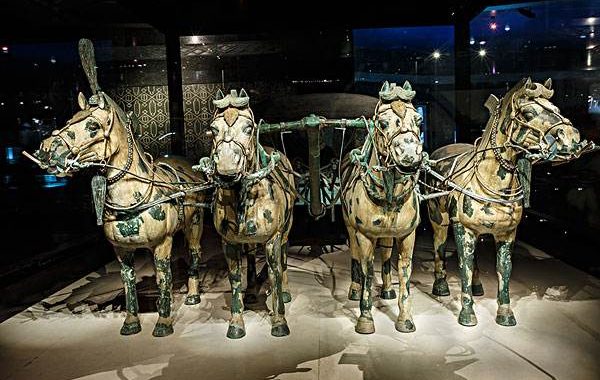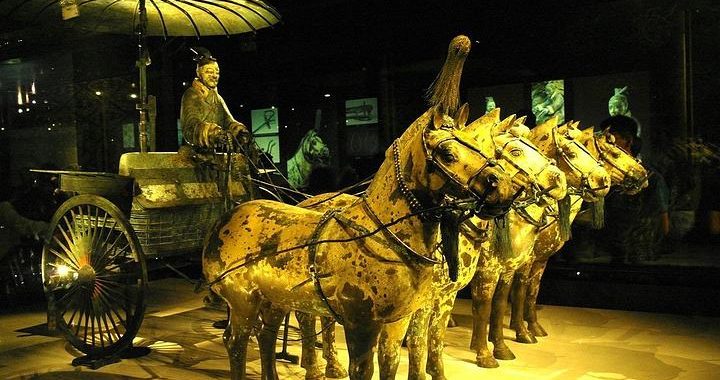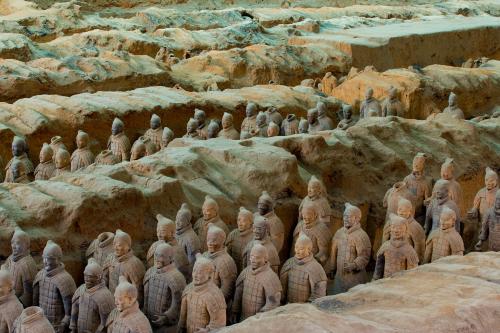Qin Shihuang’s Mausoleum and the Terracotta Legions
4 min readLocated in the central part of the Guanzhoug Plain,Xi’an is the capital of Shaanxi Province and the biggest city in northwest China.With a long history of over 3000years,it served as China’s earliest capital for 11 dynasties.It was made the capital totally for over 1100 years longer than any other on China’s history. Here the Chinese people have created their brilliant civilization and left behind numerous historical sites and underground relics. Famous historical at tractions in the city are the Mausoleum of Emperor Qin Shihuang, Shaanxi Provincial Museum, Banpo Museum, etc. Especially the world-renowned terracotta warriors and horses excavated from Qin Shihuang’s Mausoleum. They have won fame as one of the greatest archaeological finds of the 20h century.
Qin Shihuang(259-210B.C.) had Ying as his surname and Zheng as his given name. He came into power at the age of 13. By 221 B.C., he had annexed the six rival principalities of Qi, Chu, Yan, Han, Zhao and Wei, and established the first feudal empire in China’s history. The mysterious mausoleum of the First Qin Emperor is situated at the northern foot of Lishan Mountain in Lingtong County,35 kilometers away from the city of Xi’ an. This massive tomb complex was constructed over nearly forty years from 246 B.C. to 208 B.C. by Qin Shihuang, the first emperor in Chinese history. This is a tomb hill built by ramming the earth and piling up rocks. The tomb is now remains 47 meters high with the bottom of 485 ×515 meters. The whole mausoleum has two parts, the inner and outer cities. Fifteen hundred meters to the east of the mausoleum are the subordinate funeral pits, which contain its world famous terracotta army. Before the mid-1990’s a total of four pits were excavated.
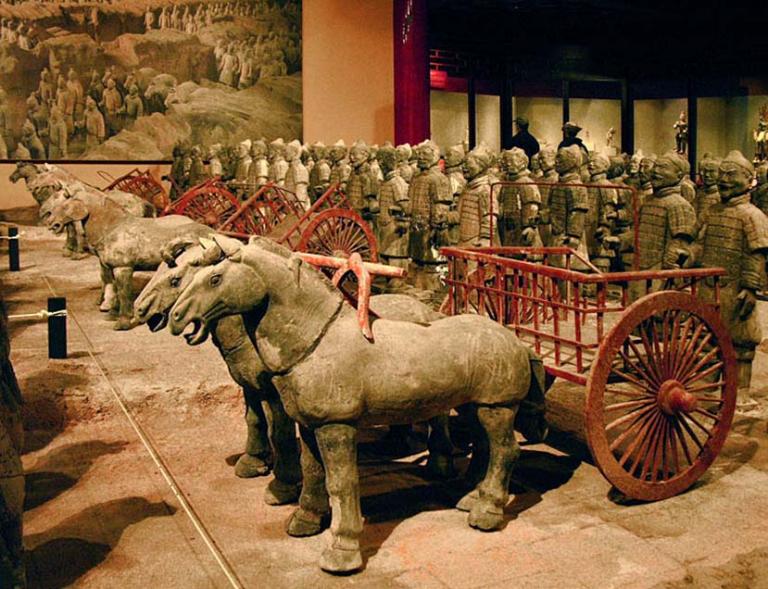
They were all constructed between 221B.C. and 209 B.C. and cover 25 380 square meters. Found inside them are some 8,000 life-sized terracotta warriors,600 sculpted war horses and 125 chariots.
Pit No.1 was stumbled in March 1974, when villagers of Lintong County sank a well 1.5 km east of the mausoleum. It is still larger than a football field and contains more than 6000 pottery figures. The warriors were dressed and appeared ready forbattle with their spears and various other combat weapons. Each warrior wears anarmy uniform, which distinguishes the soldier’s rank. Pit No.2 was found in 1976, but the excavation did not begin until 1994. This pit contains 1 400 warriors and differs greatly from the first one, primarily because of its square battle form. In addition the very pit contains 64 chariots, which are divided into groups including infantrymen,cavalrymen and even commanders to lead the troops.This display of soldiers gives insight into the work that went into the ancient Chinese army.Pit No.3 was discovered in 1980.This pit is small,but it is thought to be the garrisonheadquarters of the Qin Dynasty army.Because it contains only one chariot,six warriors and a small amount of weapons.Then the fourth pit was found.It is empty,most likely because the tomb-builders did not complete the warriors before Emperor Qin passed away.
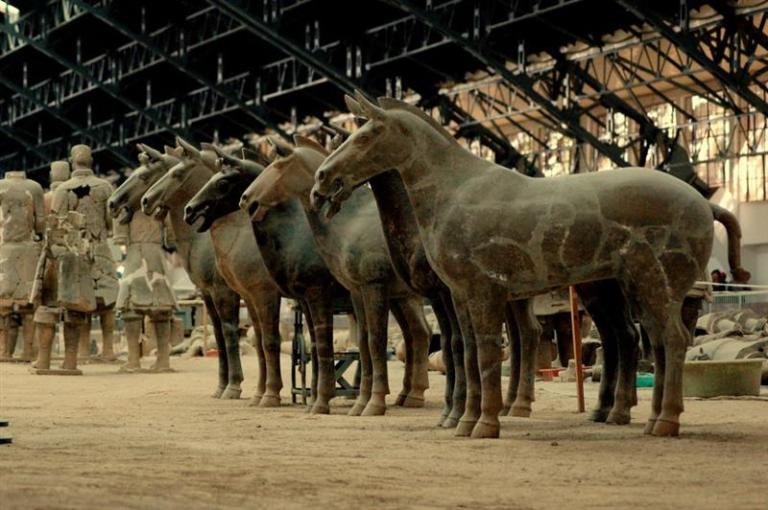
In December 1980,two teams of large painted bronze chariots and horses were unearthed 20 meters west of the mound of Emperor Qin’s Mausoleum.The chariots and horses are decorated with colored drawings against white background.They have been fitted with more than 1 500 pieces of gold and silvers and decorations,looking luxurious,splendid and graceful.These single shaft four-horse chariots each comprises 3A62 spare parts and has a body with two compartments one behind the other and an elliptical umbrella like canopy.The four horses harnessed to the chariot are 65-67 centimeters tall.The restored bronze chariots and horses are exact imitations of true chariot,horse and driver in half life-size.The excavation of the bronze chariots and horses provides extremely valuable material and data for thetextual research of the metallurgical technique,the mechanism of the chariot and technological modeling of the Qin dynasty.
Research shows that the Mausoleum is composed of three parts:the inner city where Emperor Qin Shihuang lay,the outer city which provided him with necessary military supplies and service,and the area outside the outer city where the world famous terracotta warriors stood guard.Emperor Qin’s Mausoleum has not yet beenexcavated.What looks like inside could only be known when it is opened.However,the three pits of the terra-cotta warrior excavated outside the east gate of the outer enclosure of the necropolis can make one imagine how magnificent and luxurious the structure of Emperor Qin’s Mausoleum was.
